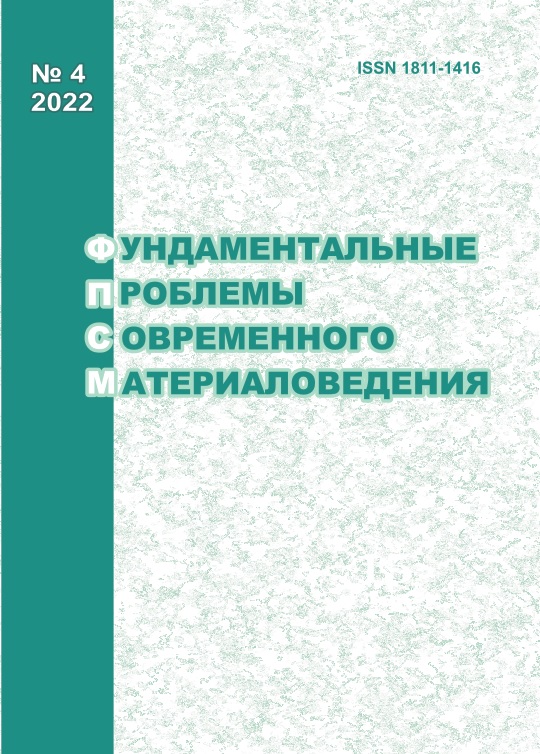CONTROL OF THE SOLIDIFICATION RATE IN THE SYNTHESIS OF Ti–Au ALLOYS UNDER RESISTANCE SPOT WELDING CONDITIONS
10.25712/ASTU.1811-1416.2022.04.009
Keywords:
resistance spot welding, Ti–Au alloy, unipolar current pulses, heat input, cooling rate, microstructure, microhardnessAbstract
Titanium-gold alloys are considered to be promising in dentistry due to their high hardness and bioinertness. However, data on the effect of their compositions and manufacturing methods on functional properties are rather limited nowadays. In order to fill this knowledge gap, six Ti-Au alloys were synthesized by fusing two titanium plates and a thin gold foil between them by electric current flowing (a process similar to resistance spot welding) with unipolar pulses. The pulses differed in the down slope duration, since the research goal was to study the influence of the metal cooling rate on the microstructure and mechanical properties of the formed alloys. The microstructure was examined by optical microscopy, microhardness distributions were determined by nanoindentation and variations of chemical composition through the nugget volumes were assessed by EDS analysis. The most even gold distribution and the maximum average microhardness in the Ti-Au nugget, as well as a high direct correlation between these parameters, were observed after the implementation of the longest cooling duration. In all studied cases, uneven cast microstructures were found, consisting of two phases: the α-Ti(Au) solid precipitates and the AuTi3 intermetallic compounds. Such intermetallic inclusions, exhibiting increased microhardness, were distributed fairly evenly throughout the nugget volume. Based on the obtained results, it was concluded that the reported technique for the formation and study of alloys is rather effective. It enables to investigate high-rate metallurgical processes and find the most appropriate thermal cycles in laboratory conditions for their subsequent implementation in various industrial procedures.











 Journal «Fundamental’nye problemy sovremennogo materialovedenia / Basic Problems of Material Science»
Journal «Fundamental’nye problemy sovremennogo materialovedenia / Basic Problems of Material Science» This work is licensed under a
This work is licensed under a 
